


RF Cascade Workbook for Excel
RF & Electronics Symbols for Visio
RF & Electronics Symbols for Office
RF & Electronics Stencils for Visio
RF Workbench
T-Shirts, Mugs, Cups, Ball Caps, Mouse Pads
Espresso Engineering Workbook™
Smith Chart™ for Excel
|
 |
A World War II German Army Field Cipher and How We Broke It
|
UNCLASSIFIED
A World War II German Army Field Cipher and How We Broke It
CHARLES DAVID
In 1942 the U.S. Army Signal Corps was looking for college graduates to train in radar work,
which was then new and promising. I enlisted, and after, six months of pre-radar courses in calculus, physics,
chemistry, and radio theory at Rutgers University, I found myselfin Camp Crowder, Missouri, the Signal Corps basic
training center. Once I was there, a classification sergeant informed me that Camp Murphy, the radar facility in
Florida, was overcrowded and that I'd be assigned to some other training. Checking my academic record and Army
Classification Test score, he suddenly asked me if I had ever heard of "cryptography."
As he thumbed
through his manual, my memory reverted to a cryptanalysis course that my fiancée had taken at Brooklyn College,
given by Professor Jack Wolfe of the math department. She and I would sit in a sunny meadow in Prospect Park, and
I helped with the frequency counts. My reverie was broken by the information that I was to be sent to Vint Hill
Farms Station, near Warrenton, Virginia - close enough to my New York home and my wife-to-be to please me no end.
Vint Hill was an unusual army camp - in a bucolic setting, with evergreen trees surrounding the barracks and woods
all around. It was a hush-hush place, and we were constantly warned to keep it so. One of its two parts was
devoted to cryptanalysis studies, and the other was a working radio facility.
The students were men of
strong academic backgrounds and achievements. Of course, there was a large supporting cast of administrative cadre
who tormented us with the usual army routine - drills, hikes, KP, inspections, and the like. However, there was
communion among the "crypt" people as a result of the learning atmosphere and the intellectual interest engendered
by these new and uncommon studies.
Our classes were taught by sergeants. Once in a while an officer would appear from Arlington Hall, but Vint
Hill was an enlisted men's camp and school. We religiously followed the texts of William Friedman and considered
him our mentor. Men left after unpredictable time periods to join active units in both main theaters of the war.
Most seemed to end up in our own signal centers and were involved with security matters. After seven months I was
called in for an interview, and I was asked if I knew any German. I had studied the language for two years in high
school and was able to read and translate a newspaper handed to me by an officer. He said that would do just fine,
and I was assigned to a special class being formed.
31 UNCLASSIFIED
UNCLASSIFIED CRYPTOLOGIC
QUARTERLY
The new class of about thirty men was taught by a very bright Sergeant Dineen. He hadjust returned from
Arlington Hall where he had been briefed on two German systemsone a lower-grade code and the other a medium-grade
field cipher which the British had started to break. We learned about the cryptographic nature of the systems and
then something of the analysis procedures. I knew then that working on them would be intriguing beyond compare. I
found out I was right when I got a chance to work on the cipher as a member of Signal Security Detachment D, an
element of General Omar Bradley's Twelfth Army Group.
In April 1944, I and other embryonic codebreakers
debarked from a large troop ship in the bombed-out port of Liverpool, England. Our group was brought to London and
billeted near Marble Arch. The next day we were brought to an apartment building on Weymouth Street that had been
given to the Signal Corps for its intelligence work. A number of comrades and I were assigned to a breaking
section working on the German army medium grade cipher. We had been familiarized with it during our last month at
Vint Hill and were told that the British had made good progress with the breaking. The system was used by all
levels of the German army, from army groups on down, seemingly where the highest-level means (Enigma) were not
necessary or available. The encryption method was a clever variation of the Playfair that rendered breaking very
difficult. We called it NI, short for Non-Indicator, as the early intercepts showed no indicator. To the enemy it
was Doppelkastenschliissel (Two-Box Cipher).
At Weymouth Street it became apparent that all the operational
work was performed by us enlisted men. This contrasted with the British army, where our equivalents were officers.
Our men and officers were mostly professional people and scholars. On the whole they were older than the average
G.I.
Our first weeks were spent on practice problems and perfecting our skills. We also took a class in
military German. Although all of the men had had some past school contact with the language, this taught us likely
army vocabulary. Oddly, however, many of the people who succeeded best in codebreaking had limited facility with
German. The language experts, both trained and German-born, tended to see more than really was present in cipher
text, and they neglected the more important principles as frequency and combination, which led to gradual but
surer results.
Soon we were thrown in with the earlier arrivals, and we began to work on current
intercepts. Before the 1944 invasion, the enemy signal units on the Atlantic Wall practiced their cryptography and
radio transmission constantly. Often they sent personal messages, newspaper articles, nursery rhymes, and the
like. As they practiced, so could we, and thus our skills were improved.
When the Normandy invasion began,
the breaking proceeded apace. We gleaned both tactical and strategic information that was coordinated with other
forms of signal intelligence, such as direction finding and traffic analysis. As our armies pressed inland, it was
decided to form a mobile unit to accompany the advancing allied armies. This was necessary for two reasons.
Firstly, our radio-intercept companies had to be near the front
UNCLASSIFIED 32
WWII GERMAN ARMY
FIELD CIPHER UNCLASSIFIED
in order to read enemy traffic more accurately. Secondly, they could send
intercepts to us quickly by messenger.
I was chosen for this unit along with a mixture of the newer and the
more experienced men. The unit was called Signal Security Detachment D, afterwards always S.S.D.D., and it was
commanded by Lieutenant Colonel Charles Allen. We were attached to General Omar Bradley's Twelfth Army Group, but
we always stayed by ourselves in the field. S.S.D.D. consisted of various sections representing all phases of
signal intelligence:
1. Cipher-breaking Team. This was my group. It was headed by Sergeant Howard Arnold, a fine cryptanalyst from
Providence, Rhode Island, who later became president of a large department store in his home city. Besides
continuing his own breaking activity, Howard supervised the group in a laid-back and thoughtful manner.
2.
Codebreaking Section, headed by Sergeant James Wallace of North Dakota, a skilled and assiduous codebreaker. After
the war Jim became a newspaper columnist in Brainerd, Minnesota. The enemy used code for lower-grade messages and
for smaller units. He and his men were very successful.
3. Traffic Analysis Group was the largest. It
studied message headings, radio frequencies, code signs of sending and receiving units, volumes of traffic, and
more to derive indications of enemy placements and intentions. Led by Sergeant George Bauer, it was consistently
productive.
4. Direction-finding Team, headed by my tentmate Sergeant Leonard Netzorg, successful Yale Law
School graduate. It located and identified enemy units by triangulating bearings. Len later became an eminent
attorney in Portland, Oregon; his career and views were the subject of a recent magazine article.
5.
Emending Section. These German language experts removed mistakes from interpreted deciphered messages. Much of
what was broken was so garbled that it required people very conversant in the language to make it coherent.
Sergeant Hyman Sobel, a Harvard instructor, was in charge. The group's members were amazed at how we cryptanalysts
broke traffic that was so full of errors,and we were surprised at their ability to make it understandable.
6. Intelligence Coordination Section. This group collated the information, evaluated it,and passed reports based
on it to the Twelfth Army Group headquarters. It was headed by a very bright Master Sergeant Samuel Lieberman,
whose ability was respected by all of us.
There was also a small photographic unit, a signal center, and
the usual administrative personnel, motor transport, mess people, etc.
S.S.D.D. landed in Normandy. We
started by living in the field and working under tents. We bivouacked in the countryside near such towns as
Coutances, Laval, Chartres, and Meaux, and in the tiny Lorraine village of Mangiennes. Then came three months in
the city of Luxembourg, where we were quartered in a school not far from the
33 UNCLASSIFIED
UNCLASSIFIED CRYPTOLOGIC QUARTERLY
headquarters of Generals Bradley and Dwight Eisenhower in the Hotel
Alfa. After the Battle of the Bulge in December 1944, we went through parts of Belgium, entered Germany at Aachen,
and after four months of movement, ended the war in Forchheim, north of Nuremberg.
As noted previously, all
the operational work was performed by enlisted men. Many of the officers were sent by the Signal Corps to
supervise subsidiary functions, such as transport and billeting, and had little knowledge of our work.
Occasionally, men from the intercept units drifted in and out of the central groups, seemingly to absorb some
notion of what was being done. Of course we had our own intelligence officers, and two in particular deserve
special note for their hands-on attitude and productive work.
The officer supervising my cipher-breaking
section was the very erudite Captain Benjamin Schwartz. He was a family man, over forty-five, who had volunteered
to contribute his expertise to the war effort. Schwartz was skilled in Sanskrit, other ancient Indic languages,
and several modern tongues, and he had headed departments for those exotic languages in the New York Public
Library and the Library of Congress. He instructed us in cryptanalysis, watched over our daily efforts, and
assumed a rather paternal role toward his men. He was a person who cared, and that meant a great deal.
Captain
Howard Mendel supervised the traffic analysis team. He worked at it incessantly, and he was an intelligent and
effective participant throughout. He was wounded in Luxembourg when a stray airplane bullet went through his side,
but much to the reliefofhis men, their Howie soon recovered and came back.
Soon after we landed, an
unexpected development struck our cipher-breaking section. Many of the approximately sixteen cryptanalysts - no
matter how adept they had been in training classes - seemed unable to cope with a real-life situation in which a
solution might not exist. A substantial portion of the enemy traffic could not be solved, and this uncertainty
created a psychological barrier that stopped men before they started. As a consequence, many faltered and produced
few results.
Four of our men did most of our breaking. They were George Hussey of Bronxville, New York, and Eric Porter of
EI Segundo, California, who worked marvelously together, Howard Arnold, and this writer.
Though we were the
signal intelligence arm of the Twelfth Army Group, S.S.D.D. traveled by itself in the field. We were an isolated
outfit, known only to the intelligence people. Our security and secrecy were superb, even within the outfit.
People in one section knew very little about the doings in other sections. On a few occasions, senior officers
from headquarters stopped by to express appreciation for our results, and they would mention a specific case or
two that were outstanding.
Our daily intelligence production was notable from the start, but it reached a crescendo during the three
months in Luxembourg. Our deciphered intercepts, traffic analysis, and direction finding indicated unusual enemy
activity before the Battle of the Bulge began on 16 December 1944. tjudge that people at army group headquarters
simply
UNCLASSIFIED 34
WWII GERMAN ARMY FIELD CIPHER UNCLASSIFIED
did not evaluate these data
properly. It probably seemed impossible to them for the Germans to stage a major armored offensive over
unfavorable terrain, especially when most of their forces were tied up on the Russian front. After the Ardennes
offensive was stopped a month later, the cipher section broke the radio traffic to the German units retreating
from the Bulge. It revealed the detailed instructions to each unit as to exactly where it should be virtually
every minute of the day. With the skies now clear, the Allied air forces made very effective use of this
information.
In January, S.S.D.D. moved again through different parts of Belgium and entered Germany,
remaining there until the end of the war. We stayed near Cologne, crossed the Rhine at Remagen, camped at Bad
Wildungen, and were in Forchheim, Bavaria, on VE Day. We then moved to the town of Russelsheim, where everyone
wondered what our destination would be in the war with Japan. But that soon ended, and gradually we worked our
separate ways home.
Many of us had a strong affection for S.S.D.D. Our fellow soldiers were often quite
accomplished and thoughtful. There were professors, attorneys, classical musicians, writers, and businessmen-all
on their way tojoin the hopeful postwar world. A short, personal epilogue: Several years later, I visited Captain
Schwartz in Washington, D.C. He had stayed in the army and had become a colonel in Army Signal Intelligence. We
were happy to see each other and had much to discuss. He thanked me for my artime efforts and then offered me an
immediate commission to reenlist and come to work with him. I'm afraid that my destiny was as a civilian, but it
was gratifying to have the praise and appreciation of the boss.
NI DESCRIPTION AND BREAKING
The
medium-grade field cipher was called "Doppelkastenschlussel" - Two-Box Cipher - by the Germans. Because the first
messages when intercepted by the British bore no indicator, the Allies called it the Non-Indicator or NI system.
The NI was used from army groups to all lower units down to company level and carried both tactical and strategic
information. It ranked just below the Enigma, the highgrade electromechanical machine cipher. The Enigma could not
be distributed to the multitude of lower field units, and thus the NI served as a more practical hand system.
During the North African campaign, the British overran a German signal center and discovered the nature of the
system.
35 UNCLASSIFIED
UNCLASSIFIED
System Rules
CRYPTOLOGIC QUARTERLY
The
NI cipher combines a transposition, or more precisely, a seriation of the plain text, and then two Playfair-Iike
encipherments. The apparatus of the system consists of two 5x5 random-alphabet squares (which omit J) such as
those in figure 1.

Fig. 1. Enciphering boxes
A plaintext bigram, say ED, is enciphered by finding the first letter in Box
1 and the second letter in Box 2. In this case E is on row 2 of Box 1, and U is on row 4 of Box 2. The two letters
are considered as diagonal corners of a rectangle, and the intermediate cipher bigram is those two letters which
complete the rectangle, namely VR.

Fig. 2. First encipherment
The bigram VR is now itself enciphered just as the original plaintext bigram
was and the resultant diagonals form the final cipher letters - QZ.

Fig.3. Second encipherment
•
In this way EU becomes QZ in cipher.
UNCLASSIFIED 36
WWIIGERMAN ARMY FIELDCIPHER UNCLASSIFIED
If the two letters of a bigram to be encrypted lie along the same
line in both boxes, we take the letters immediately to the left as cipher values. These we called liners. .For
example, DL= KC. The rectangular cases we called diagonals.

Fig.4. Linear encipherment
For cryptanalytic purposes it is important to see that four combinations of
diagonals (0) and liners (L) exist:

The seriation of the plain text consists of writing in blocks of two lines of twenty-one letters each. For
example, using the first line of Heine's poem "Die Lorelei":
Ich weiss nicht was soll es bedeuten
dass ich so traurig bin
and replacing the common ch combination with q:
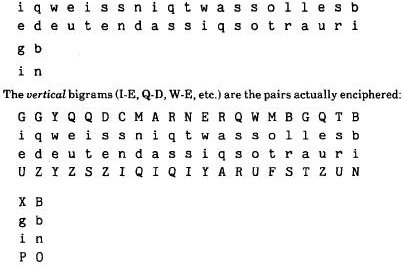
37 UNCLASSIFIED
UNCLASSIFIED CRYPTOLOGIC QUARTERLY
The cipher text is then read off
horizontally in groups of five letters for transmission.

German Communication Protocols
Each German division had its own set of cipher boxes. It was assigned
six different boxes for each day. These were paired in different combinations for each day's eight three-hour
periods. In effect, there were eight keys per day.
The German encipherers followed certain conventions,
though they grew lax as the war progressed. They placed an X before and after all numbers, proper names, place
names, sentences, within abbreviations, and at the end of plain texts having an odd number of letters. As a
result, plaintext X had an abnormally high frequency and tended to mask the identification ofthe usual
high-frequency German letters.
The word zuiei ("two") was changed to zwo, and ch plain text was changed to q, distorting the frequency of q
also. The use of occasional "quatsch" (German for nonsense) sequences was encouraged to distort combinations and
frequencies.
All in all, the Germans seemed to feel that the NI system was impervious to timely
cryptanalysis. They had readied a different system on general security grounds but kept the NI right to the end.
Some Cipher Security Considerations
The seriation (vertical reading of the plaintext bigrams) ensured that
the enciphered bigrams were not same letter combinations of normal German text. The most frequent ciphertext
bigrams certainly did not reflect the most frequent German combinations (en, er, ei, ie, in, etc.). What the
ciphertext bigrams did reflect was the individual frequencies of disconnected German letters taken two at a time.
The most frequent NI cipher bigram had a good possibility of representing plaintext ee, for example, but this was
by no means always the case.
Even knowing the mechanics of the system, we found that the reconstruction of the cipher boxes was extremely
difficult because ofthe double encipherment feature. No doubt the German signal experts counted heavily on this.
By using different boxes for each division and by changing the boxes every three hours of every day, the Germans
made the cipher uncomfortably close to a one-time pad systemunbreakable in theory and practice. Nevertheless we
broke it and, generally, in useful time.
UNCLASSIFIED 38
WWII GERMAN ARMY FIELD CIPHER
UNCLASSIFIED
AIDS TO CRYPTANALYSIS: THE INITIAL BREAKS
Each message was preceded by three-letter
callsigns of the sending and receiving units and the time of day. Our traffic analysis teams were quite adept at
identifying them. This plus the assigned radio frequency used aided in sorting the messages by unit - and
therefore by key.
In cryptanalyzing the NI system, we used very large sheets of paper, colored pencils, and
good erasers. These sheets and colors cannot be fairly reproduced in a journa1. I will describe our analytic
tools, show how we used them, and then leave it to the initiative of the reader to complete the analysis to reach
the final plain text.
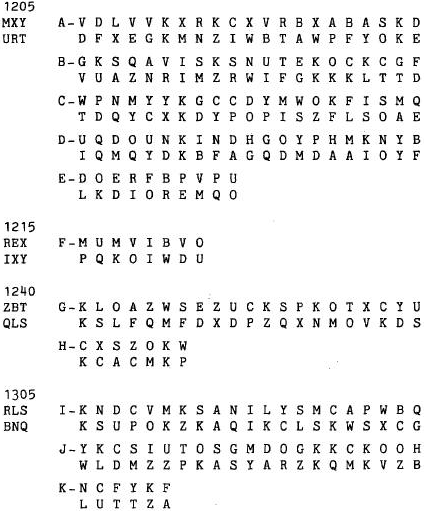
39 UNCLASSIFIED
UNCLASSIFIED CRYPTOLOGIC QUARTERLY
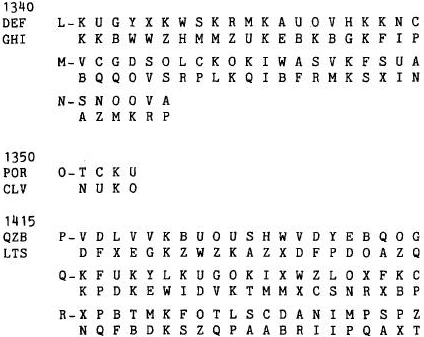
Fig. 5. Transcribed messages for a single period
Usually we needed a sufficient number ofletters in the
same key to make inroads into the cipher. We were delighted if many more letters arrived for a three-hour period,
but often not enough traffic was intercepted to afford us an entry.
To illustrate the solution of the
cipher, I have composed a sample problem of eighteen lines of cipher text supposedly intercepted from units of one
division during a three-hour period. Also listed are the times of transmission and the callsigns of the sending
and receiving radio stations. Each pair of lines is given a line identification letter (see Fig. 5). The messages
have been manipulated to allow showing a number of techniques in a relatively short space. This sample is much
less difficult than the messages we encountered, although the language is typical of the German radio traffic of
the time. Knowing how the system worked, we were able immediately to rewrite the intercepted messages in two lines
of twenty-one letters each. Once the messages were in this form, we made a bigram frequency - one of our most
useful tools. The count was made in a 25x25 matrix on graph paper.
Each line of the problem was given an
identifying letter at the left, as can be seen in -figure-6: "When a bigram was entered on the frequency count,
that line-identification letter was entered in the appropriate square instead of a tally mark allowing us to
locate the occurrences rapidly (see Fig. 6).
UNCLASSI FIED 40
GERMAN ARMY FIELD CIPHER UNCLASSIFIED
With the frequency count as a guide, we attacked the messages
using a technique we called anagramming. This started with an assumption - an educated guess - followed by a good
deal of trial and error. The intent was to substitute these plaintext assumptions throughout the problem, check
surrounding values, and search for clues to expand our guesses.
We could not immediately start
reconstructing the boxes even when our assumptions were corroborated because of the double-encipherment feature.
The middle bigram is unknown, and a workable number of plaintext values must be ascertained before a start can be
made in forming the boxes.
In the frequency count, we find that KK cipher text stands out with the highest count by far. We can start by
assuming that it represents ee. We replace KK with ee throughout the text and see where it leads us.
The
Germans often sent very short messages that reflected basic military necessities and which were therefore
constantly repeated. The most common six-, eight-, ten-, and twelve-letter messages were known to us. Curiously,
we were almost never given information about the military situation that might yield more specific probable words
for our attacks. I don't know why. Perhaps it was security, perhaps ignorance, perhaps lack of
time.
Note Line 0 in our sample problem:

To the experienced eye, this is a dead giveaway. The Germans were constantly asking, "What is your position?"
or wie lage. The phrase might be preceded by a "please" or "request" or an addressee, but time was critical, and
the eight-letter message was common. We thus have assurance that our KK = ee assumption is probably correct, and
we have:

Our initial assumption has grown: We now have plaintext pairs wa, wg, and lx. The Germans used many
stereotyped openings. With experience, we cryptanalysts could recognize them. For instance, messages frequently
began with an ("to") followed by the person or unit receiving the signal.
We are fortunate in having three
of our practice messages begin with KK cipher text.
In German military text, about 95 percent ofthe time a
message starts with e, the opening
41 UNCLASSIFIED
UNCLASSIFIED CRYPTOLOGIC QUARTERLY

UNCLASSIFIED 42
WWII GERMAN ARMY FIELD CIPHER UNCLASSIFIED
Line I -
Line L words
will be one of four: erbitte C'request"), eigene C'our, our own"), ein C'a"), and eins C'one"). Let us see how
this works in our text.
If we try erbitte in Line I, the final e falls on ciphertext KZ, which has a high
frequency. (Frequencies are always our strong ally.)

KZ also occurs in line L in position 6. This is a perfect opening for eigene:

Although these are only the upper values of bigrams, when they are substituted throughout the text, we gain
opportunities for assumptions for additional anagramrning. For example, bigram CP in Line I has a rather high
frequency, and it is a good assumption that the bottom plaintext letter is e.
We now examine other lines,
with our assumed plain text entered, and see what can be done:

Units in the field constantly sent reports to various headquarters. German operations officers in a unit's
staff (G-3 in American nomenclature) had the designator 1a. Messages to higher headquarters often began "an roem
eins Anton" C'to roman numeral one Anton" " Anton" being the German phonetic equivalent of our "Able"). Line A has
several values that fit this possibility:

Often this opening was followed by "enemy something or other" as "enemy tanks, or planes, or troops." ("Enemy"
is "Feind" [noun) or "FeindIiche" [adjective] in German.) That seems a likely entry here because of the KK (ee)
second from the end on top and around the bottom where "Feindliqe" connects with it. Now we have six more probable
equivalents to substitute throughout.
43 UNCLASSIFIED
UNCLASSIFIED CRYPTOLOGIC QUARTERLY

Let us examine one more short message to see if anything can be made of it:

That first word just has to be bitte ("please"). But please what? A common request was for a situation report,
and a frequent sixteen-letter message was therefore bitte lage meldung ("situation report, please"). Checking the
frequency chart also shows higher counts for a few of the cipher bigrams that accord well with their plaintext
equivalents (e.g., II =e d has a count of 5 and VD =an a count of 3). We always looked for frequency indications
that tended to confirm what were still only assumptions. Thus we have eight more probable bigrams:

It was a good break if we found two messages with the same beginning. It was especially helpful if the
beginning was longer than twenty-one letters and thus continued on the second line. Such a case may be seen in
Lines A and P. We have already anagrammed some of Line A, and it seems as though it may share the first
twenty-seven letters with Line P. Note the six-bigram repeated block at the beginning of Lines A and P and the
repetition of vertical bigrams at positions 1 and 14 of Line P.
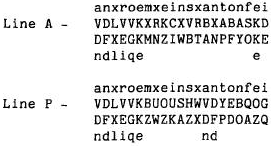
Thus it seems we have another fifteen upper letters to substitute in the problem. One of the greatest helps to
the cryptanalyst is to know what the enemy is likely to talk about. There were plenty of the German equivalents of
"enemy," "aircraft," "troops," "armor," and so on. But by far the most common words were the cardinal numbers:
eins,
UNCLASSIFIED 44
WWII GERMAN ARMY FIELD CIPHER UNCLASSIFIED
zwo, drei, etc.
Supply reports, casualty figures, radio frequencies, times of day, location grids, and much more all required
numbers.
Often when no other openings were visible, numbers could be spotted in the middle of messages -
after some judicious assumptions based on frequency and combinations. The ten digits were frequently used in
groups (e.g., four digits for the time of day plus uhre, "hours") and were separated one from another by X.
Security violations and operator mistakes greatly helped us. Of course, we were always looking for that rare
happening - the same message sent in plain and cipher textbut
that was rare.
Let us examine Line G ofthe problem:

We already have some letters of Line G, one of them being an initial e. Now look in figure 5 at the header of
the message:

The alert cryptanalyst now rubs his hands in glee because he realizes that the careless German code clerk has
included the time of day at the beginning of the message. (This occurred once in a long while.) We now have the
following:

There is a slight problem here because the code clerk accidentally omitted the X after null, but that is seen
when uhre fits into the bottom e of cipher KK.
The above examples should give a good idea of how the
initial plaintext wedges were made. Again, I caution that the sample problem is contrived - it was never this
easy. Very few of these entry points, if any, appeared within the same three-hour period. It took a very patient
cryptanalyst to find correct plain text in the average set of messages.
This involved daring assumptions
and detailed tracking of surrounding bigrams to find promising combinations. Trial and error, persistence, and
some sixth sense could lead to progress. We stuck with a three-hour period as long as it seemed to show promise -
a large volume, a good frequency count, likely plain texts. Conversely, we abandoned a period for a new one -
usually on the basis of instinct and experience - when we were getting nowhere.
45 UNCLASSIFIED
UNCLASSIFIED CRYPTOLOGIC QUARTERLY
Once a sufficient number of bigrams was recovered - one cannot quantify it exactly we set about trying to
reconstruct the cipher squares, a process we called "boxing." This could be the most daunting task of all. As the
squares were completely random, we did not get help from any pattern or keyword.
The first step was to make
"encipher" and "decipher" charts. These were large sheets with 25x25 matrices, each cell with four quadrants (see
Fig. 7).
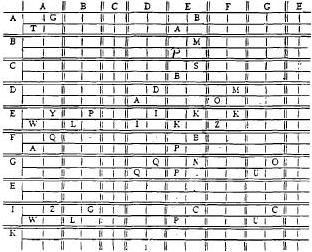
Fig.7. Portion of encipher chart
The charts were over a foot square and were preprinted for us in
horizontal sets of two, which made it easier for us to fill in and work from both at the same time.
In the
encipher chart, the bigrarn coordinates of the matrix represented the plain text, with the cipher equivalents
written in the appropriate square. The first letter of the cipher bigram was written in the upper right quadrant
of the square, and the second letter in the lower left quadrant, thus serving as a reminder of which letter
belonged in which box.
The decipher chart was the reverse. The coordinates were the cipher bigrams, with
the plaintext bigrams written in the upper right and lower left quadrants of the inner squares. The upper left and
lower right quadrants were reserved for the unknown intermediate bigrams of the cipher which might be discovered
as we progressed with pencil and paper.
These charts now served as the the software for the computer in the
cryptanalysts' minds. With graph paper and pencils, the problem then was to somehow string these letters together
so as to recover the original cipher boxes. For a start we used numbers to represent the middle letters, and then
by using other related values we tried to "hook"
UNCLASSIFIED 46
WWIl GERMAN ARMY FIELD CIPHER UNCLASSIFIED
some of the letters together.
Except in the unlikely event of a very great amount of anagrammed plain text, this became an eye-twisting exercise
in frustration for several reasons.
First, we had no idea of the middle bigram. Second, as I explained
earlier, the final cipher bigram can be the result of four possible enciphering combinations: diagonaldiagonal,
liner-diagonal, diagonal-liner, and liner-liner. Third, we had no idea of which letters in each box were on the
same line, or in the same column, or opposite which line in the other box.
Fortunately, the inherent
properties of the boxes and the enciphering method offered ways to help reconstruct the boxes. I will use the
cipher boxes of figure 1 to illustrate the three most useful phenomena.
1. Reversibles - If the middle
bigram of the encipherment is a repeated letter, the result of the second must be the reverse of the original
plaintext bigram:
ed =HH =DE
This can result only from a double diagonal, which is a clue we
really need in our boxing effort.
2. Reciprocal - Assume a plaintext bigram enciphered via two diagonals. If the reverse of its cipher bigram
happens to be a plaintext bigram, its own cipher equivalent is the reverse of the original plaintext bigram:
(1) ne =AW =XM
(2) mx = WA = EN
Thus if we find two of our anagrammed bigrams 10 this
forward-revere relationship, we know that they can result only from a diagonal-diagonal encipherment. We encircle
these in red on the encipherment and decipherment charts. Eliminating the possibility ofliners is invaluable in
rebuilding the boxes.
3. Appendixing - "Appendixing" aided the analyst in determining which letters were on
the same line in a box. If any letters are on the same line (e.g., K, X, N, Z, or Y in Box 1 of figure 1) and are
combined with one particular letter in Box 2 - say the letter E in the fourth row - then the first letter of the
middle bigram must be the same for all the bigrams:
ke = AR = XX
xe = AA = EX
ne =
AW = XM
ze = AG = UX
ye = AU = XR
47 UNCLASSIFIED
UNCLASSIFIED CRYPTOLOGIC
QUARTERLY
When the middle bigram is reenciphered, since the first letter (in this case A) is always the
same, the final bigram can consist of only one of five values in each box, instead of the usual twenty-five: (in
this case U, I, E, M, or X in Box 2, and X, M, Q, A, or S in Box for letters to the left when a liner is
involved).
So if we find a pattern of repeats going down a column of our charts, there is a greater than
normal chance that the corresponding outside letters on the left are on the same line in their box. This can be
fortified if another column shows a similar pattern. None of this is certain, but it bolsters the odds.
From this point, the cryptanalyst resorts to trial-and-error boxing. If the reader has experience with a
particularly difficult Playfair cipher, where it appears that some letters must be all at once on the same row, in
the same column, and on the diagonal with others, he will have some appreciation of what we faced.
Common Boxes
As mentioned earlier, each German unit was supplied with a group of six boxes for the day.
Since two boxes were necessary for each of eight three-hour periods, some of the boxes were used more than once.
For instance, Boxes 1 through 6 might be used as follows:
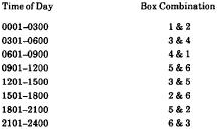
The difficult and crucial breaking was of the first workable period that appeared during the day. This was not
necessarily the 0001-0300 slot but the first period with enough text to attack. We called that the original
period. Which it would be was not predictable; no period was regularly the busiest. After that a search was made
for other periods that used one of the two boxes now known. If one was discovered, its period was a rather easy
one to solve.
Locating a common box in the double encipherment was not simple. A period had to be anagrammed and boxing
started before there was a basis for comparison. However, once a common box was spotted, an experienced analyst
could quickly reconstruct the second one. I would like to discuss the major reasons for the NI cipher-breaking
being so difficult and daunting.
1. Volume: The enemy changed its boxes every three hours of every day. The
quantity of cipher text available in a three-hour period was often insufficient to work with, or just marginally
sufficient, and might not bear fruit.
UNCLASSIFIED 48
WWII GERMAN ARMY FIELD CIPHER UNCLASSIFIED
2. Peculiarities: Even with adequate volume, a particular text might have a makeup that frustrated continuity,
even after sensible beginnings. Worst of all was an aberrant frequency count, which would result in interminable
false starts. Though this is common with limited message volume, many longer texts displayed abnormal frequency
indications. Despite this, we had the feeling that, given time, we could break into most problems, which brings up
the next obstacle.
3. Time strictures: Messages enciphered in NI dealt with both tactical and strategic
matters. However, after a day or two, the intelligence became stale, and we had to go on to new and fresh
material. Working under this kind of pressure proved impossible for some of the men.
4. Garbles: This was
the greatest obstacle. The German cryptographers made mistakes, their radiomen transmitted wrongly, and our
interceptors made errors in picking up what was often a weak signal. At times we had the same messages from three
or four intercept-companies, and the variation could be most marked. If breaking assumptions are based on wrong
cipher values, the analyst is dead in the water from the start. Sometimes we displayed an almost sixth sense about
incorrect letters, but garbles greatly hindered us.
A Simplification - Single Encipherment
With the invasion of Normandy in June 1944, much of the enemy traffic began to be enciphered only singly, the
second, double encipherment being omitted. The German communication experts perhaps realized that the double
encipherment took too long and was too prone to error at both ends to use in combat situations.
To
illustrate its use, here are the opening words of "Die Lorelei" singly enciphered in the boxes of figure 1:

It will be seen that our task was much simplified. The diabolical middle bigram no longer exists, and the
analyst can use a reciprocal process of simultaneous anagramming and boxing. Some salient helping points are as
follows:
1. When enciphered, a plaintext letter must result in a different cipher letter in the same box. Thus, for
example, bigram ab cannot possibly show a cipher B on top or a cipher A on bottom. This helps prevent wrong
anagramming.
2. Single plaintext values allow a start to be made in boxing. If we know that plaintext u- is cipher XV, then
we also know that X in Box 2 is on the same line as u in Box
49 UNCLASSIFIED
UNCLASSIFIED
CRYPTOLOGIC QUARTERLY
I, and that Y in Box 1 is in the same column as u in Box I, or in the same line
adjacent to u. Single values are far less useful in double encipherment.
3. Plaintext assumptions lead more
quickly to boxing contradictions than they do in double encipherment, letting us discover anagramming errors much
earlier.
Unfortunately, while these aids are valid, they were rather moot in practice. Often the reason was
the lack of sufficient traffic in any three-hour period. Add to this the numerous garbles, and breaking the cipher
was still difficult - especially in a usable time frame. Nevertheless a large volume of the single encipherment
was broken in time to be of use. Because of security necessities and our isolation, we were largely in the dark as
to the use of our information, but we were assured by officers from General Bradley's headquarters that it was of
constant and great value.
To sum up, I found that breaking the NI cipher system was a complex and often
mindbending process. It would be interesting to learn if it were the last of the "pencil-andpaper" systems used by
a major army in a major conflict. It was tempting to think of it as "interesting" or "intriguing," but in wartime
that seems incongruous. Perhaps now, many years later, we can study it with a greater degree of academic
equanimity.
UNCLASSIFIED
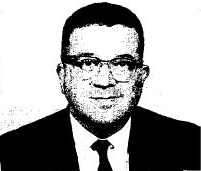 (U)
Mr. David was born in Brooklyn, (U)
Mr. David was born in Brooklyn,
New York, and graduated from
Brooklyn College in 1941. After taking
graduate courses at Columbia
University, he enlisted in the U.S. Army
Signal Corps in 1942 and served as a
cryptanalyst until his discharge in 1946.
Mr. David then went to work as a sales
representative, from which
he retired in
1988. He presented a talk on the subject
of this article at the 1994 Cryptologic
History Symposium.
50 |
 |
|

 |



















































 (U)
Mr. David was born in Brooklyn,
(U)
Mr. David was born in Brooklyn,